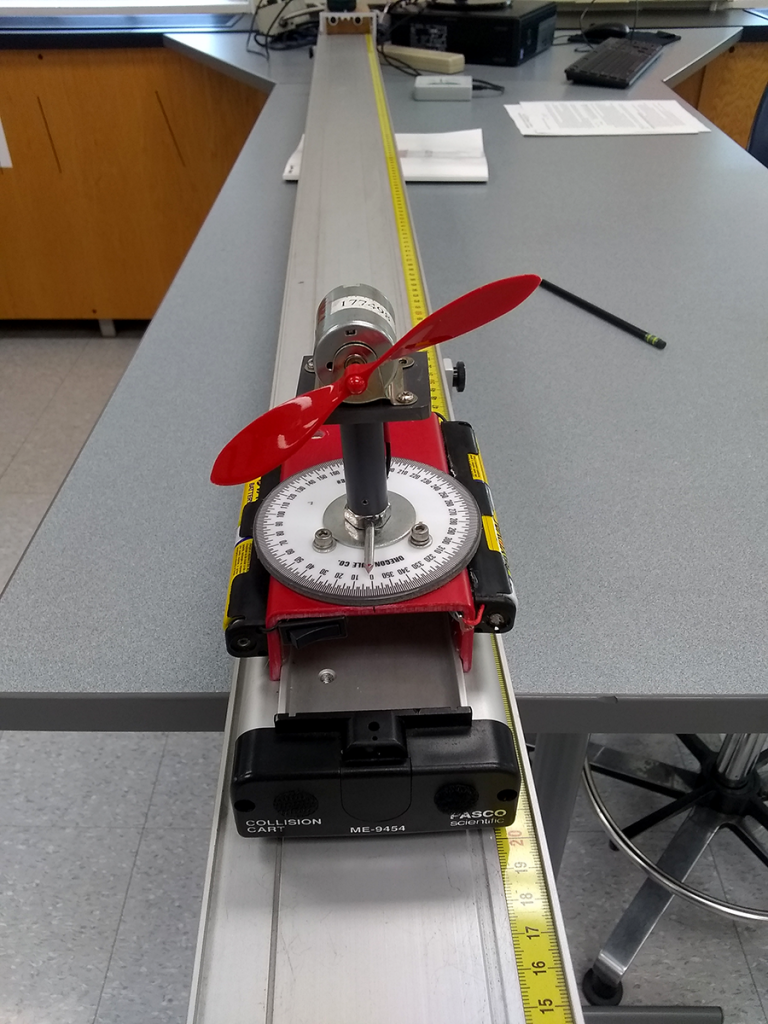
Newton proposed three laws of motion, and it’s the second one that makes for the most interesting labs. Maybe there’s some way to make inertia both fun and educational, but let’s leave the first law for lecture. Equal and opposite reactions are pretty great, but that’s ideal for big demos. Read: rocket launches.
Force, though. Force lets students do stuff and observe what happens. Doing stuff and getting results is how you make physics more interesting.
One tool in our Newton’s-second-law arsenal is the fan cart. An assemblage of a cart with low-friction wheels and a simple DC motor holding a plastic fan. The fan mount pivots, providing variable direction of force. Runs on AA batteries, and is held together mostly with hot glue.
Two very good reasons for the hot glue: 1) When one of these invariably plummets to the floor, the less-than-rigid connections absorb a good deal of the impact when it all falls apart. Usually it falls into pieces, but nothing’s really broken. 2) After one has taken a tumble, it’s mere minutes to get it re-glued and running once more.
The reason for the fan is that it provides a close approximation of constant force, F. If F is constant, and mass (m) is constant, then by F = ma, acceleration (a) is constant, too. Give a running cart a little backwards push – an additional force – and study how its position and velocity change over time. Simple? Sure, and that’s helpful when tying together various concepts.
Relationships between force, mass, and acceleration according to Newton’s second law. Two-dimensional vectors come into play when rotating the fan. Our motion detectors read position, so it’s an illustration of integrals and derivatives underpinning the acceleration, velocity, and position of a moving cart.
The importance of catching a speeding object before it bangs into the end of the track and crashes to the floor.